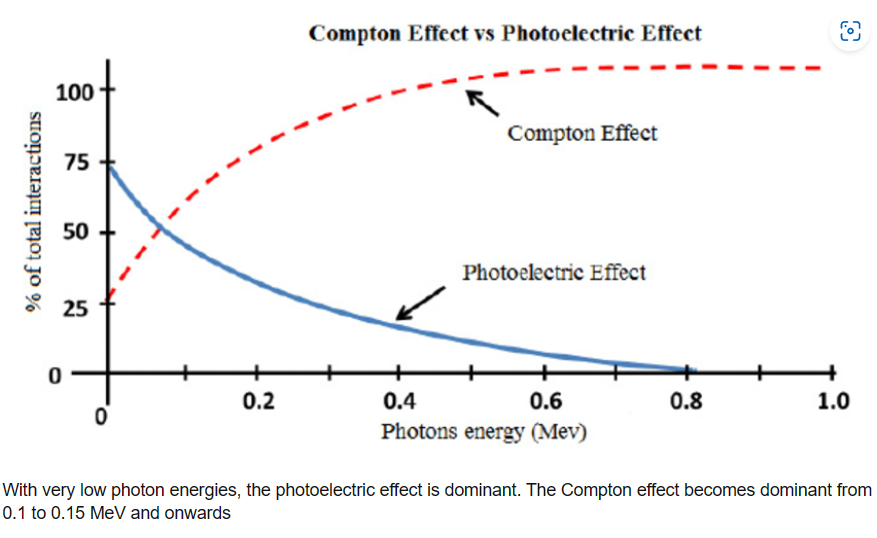As you can see in this link: https://www.researchgate.net/figure/With-very-low-photon-energies-the-photoelectric-effect-is-dominant-The-Compton-effect_fig4_221928565
TheProbability wise, the photoelectric effect is typically observed when the energy of the incident light is lower than what is required for both Compton scattering and pair production, but higher than the energy needed for Rayleigh scattering.
Additionally, the likelihood of the photoelectric effect increases when the matter that interacts with light possesses a large atomic number and high atomic/electronic density. Examples of such materials include Lead, Tungsten, and even more so, Uranium.
- In general, loosely bonded electrons and free electrons are targets of Compton Scattering although the Compton Effect requires more energy to occur than the Photoelectric Effect, Inner Shell electrons let's say K-level electrons are targets of the Photoelectric effect.
How is this possible? Normally higher energy should have most probably equated more to interacting with inner shells as we see in the photoelectric effect but here we are now saying that although the Photoelectric effect requires lower energies than Compton Effect it interacts with inner shells and - visa versa - While Compton Scattering requires higher energies that photoelectric effect it just happens most probably on the valance/surface level free electrons.
For more information:
EDIT: Wikipedia: https://en.wikipedia.org/wiki/Photoelectric_effect
Headline: "Competing processes and photoemission cross section"-section"

